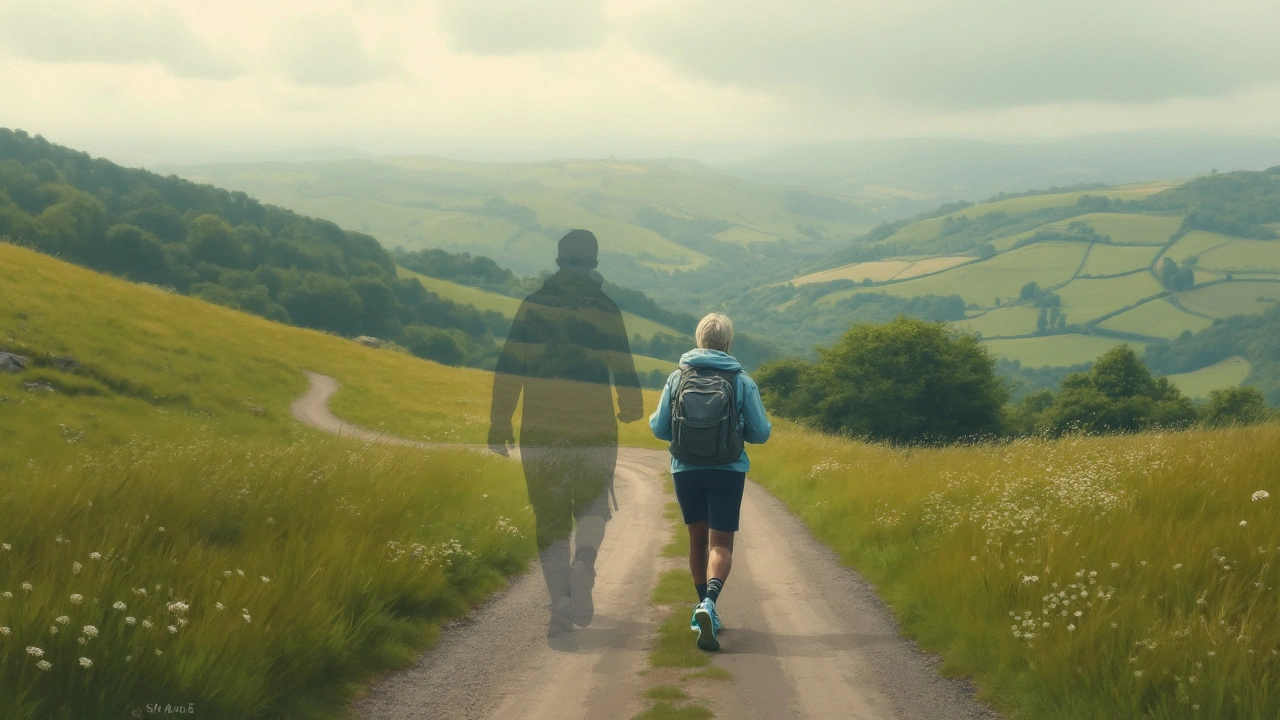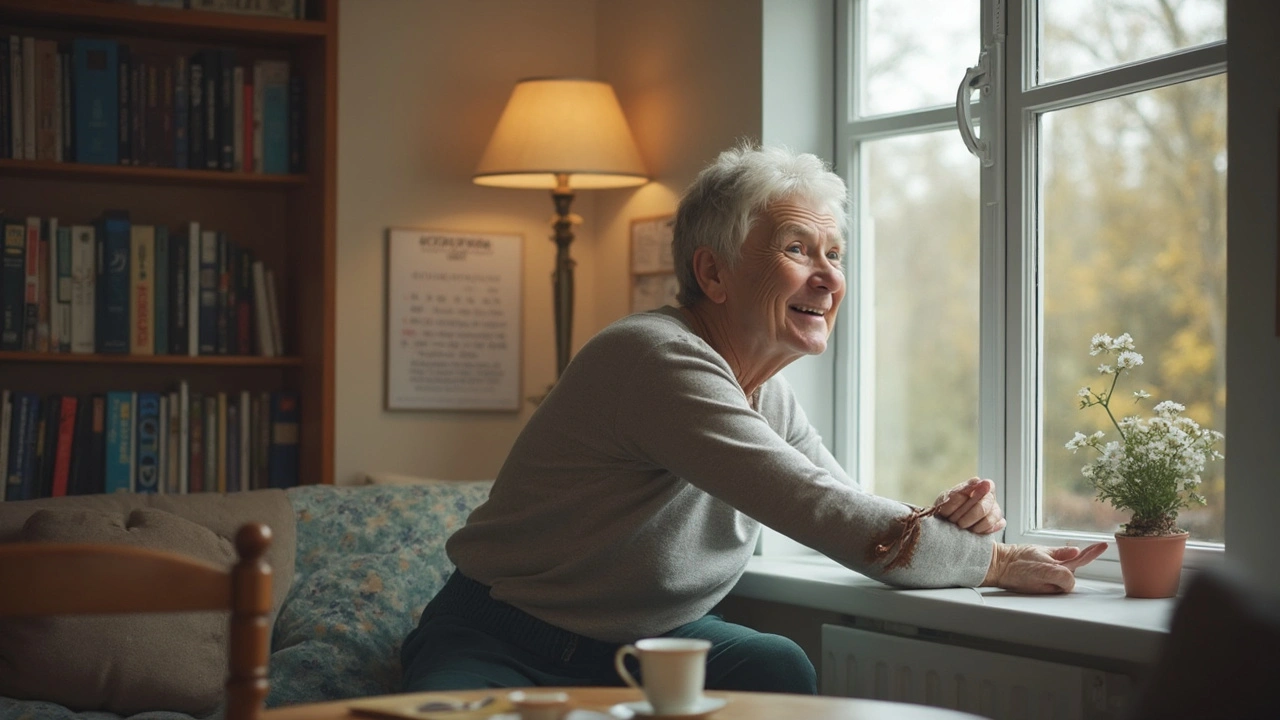Heard about Rolfing and thought it was just another massage trend? Think again. Rolfing takes a totally different route from the usual spa treatment. Instead of just relaxing muscles, it focuses on your fascia—that stretchy stuff under your skin that holds everything in place. When life throws its punches—like sitting at a desk all day or carrying heavy backpacks—your fascia can get stuck, leading to aches, weird posture, or even nagging injuries.
What makes Rolfing stand out is how it works to literally re-shape your body’s structure over several sessions. Regulars say that after a round of Rolfing, they move better, feel lighter, and even look taller. Crazy, right? It’s not magic, it’s just a smart way of working with the body’s natural design. If you feel like your body needs a reset and nothing else seemed to help, Rolfing might just be the game-changer on your radar.
- What Is Rolfing, Really?
- How Rolfing Is Different From Massage
- What Happens During a Rolfing Session?
- Who Should Try Rolfing?
- Tips for Getting the Most out of Rolfing
What Is Rolfing, Really?
Rolfing is actually called Rolfing Structural Integration, named after Dr. Ida Rolf, who developed it back in the 1960s. Instead of just working on sore muscles, it focuses on your connective tissue, called fascia. This stuff wraps around all your muscles, bones, and organs, kind of like a bodysuit. Over time—thanks to injuries or just lousy posture—your fascia can get stiff, bunched up, or twisted, making things ache or feel out of whack.
What makes rolfing stand out is the way it looks at the entire body, not just sore spots. The goal is to get everything in your body stacked up the way nature intended, from your head all the way down to your feet. Rolfers use hands-on pressure (sometimes it feels intense, not gonna lie) to stretch, move, and open up the fascia. The basic program is usually ten sessions, each focusing on a different part of your body, so by the end you’re basically rebalanced from head to toe.
If you’re wondering if it’s for real, top athletes and movement professionals sometimes use Rolfing to improve flexibility and recover from injuries. There’s even a study from the University of California, Irvine, that showed people who finished a ten-session series could see better posture and even less pain—results that stuck around after the sessions ended. While there’s still debate in the medical world, plenty of regular folks swear by their improved mobility and long-lasting results.
How Rolfing Is Different From Massage
Rolfing and massage sound similar, but they're not twins. They’ve got totally different goals. A massage usually zeroes in on relaxing your muscles, boosting circulation, and knocking away stress for a while. Most people book a massage to feel good right away, and honestly, that’s what it delivers—a temporary fix.
Rolfing goes deeper. The main focus isn’t muscle tissue; it’s the fascia. Fascia is like your body’s internal cling wrap, helping keep your whole structure together, from head to toe. When this fascia gets tight, stuck, or bunched up (think about years of slouching or old injuries), things get out of whack pretty fast. Rolfing aims to stretch and loosen this fascia, actually changing your posture, improving the way you move, and helping long-term pain melt away.
Here’s where it gets interesting. Rolfing usually follows a ten-session series—often called the Rolfing Ten Series. Each session has a plan, tackling different body parts in a certain order. Most regular massages aren’t mapped out in this kind of sequence. Rolfing sometimes feels more intense during the session, but the changes are built to last.
Let’s break down a few differences:
- Rolfing looks at the body as a whole, not just the sore spots.
- Where massage might handle stress or tight muscles, Rolfing can address patterns in your body that have been building for years.
- Rolfers often ask you to stand, walk, or move during the session. That helps them spot issues in your alignment or movement, so treatment is more targeted.
- The aim isn’t just relaxation—folks after Rolfing want real changes in how their body works and feels, not a short-term fix.
If you’re wondering which one is right for you, it comes down to your goals. If you want a quick escape from stress, massage is great. But if you’re after real change in your body structure, Rolfing is the hidden gem worth checking out.

What Happens During a Rolfing Session?
Walking into a Rolfing session feels a bit like heading to physical therapy, only more hands-on and personal. It usually starts with your Rolfer looking at how you stand and move. They’ll ask you to walk or maybe even sit and bend so they can spot any areas where your body seems tight, tilted, or stiff.
The hands-on part comes pretty quick. You lie down on a sturdy table—kind of like what you see at a massage studio—but that’s where the similarities end. The Rolfer uses slow, steady pressure to work on thick bands of fascia and muscles. Sometimes this feels like a deep stretch, other times it’s more of a firm push. They might work up and down your legs, dig gently into your back, or even work on your arms, neck, or jaw. The goal? Loosen things up where your body holds tension, so your whole system can move more freely.
Most folks do Rolfing in a series of 10 sessions, called the “Ten Series.” Here's how it usually breaks down:
- 1-3: Loosening Surface Layers — The first few sessions focus on breathing and opening up places like your rib cage and hips.
- 4-7: Deep Structural Work — Next, the Rolfer works deeper, getting into your core, legs, and spine to balance things from the inside out.
- 8-10: Integration — These wrap-up sessions help your body parts work better as a team, so you keep the progress once the sessions end.
Unlike a regular massage, Rolfing expects you to participate. You might be asked to move, breathe deeply, or even stand and walk during the session, so your body relearns better movement patterns on the spot.
| Quick Facts | Details |
|---|---|
| Session Length | Usually 60-90 minutes |
| Clothing | Comfortable underwear or athletic wear |
| Frequency | Weekly or bi-weekly |
One thing to know—the work can feel intense in places where you’re really tight, but most people say it’s the "good kind" of pain, with relief and lightness that sticks around after. If you’ve struggled with chronic pain or just feel locked up, a rolfing session might open things up in ways you didn’t expect.
Who Should Try Rolfing?
Rolfing isn’t just for athletes or people who are into alternative wellness trends. It’s actually meant for anyone who struggles with tight muscles, chronic pain, or weird posture issues. If you’ve got a stiff neck after sitting in front of your computer all day, or if you’re dealing with old injuries that never quite healed right, Rolfing may help.
What’s wild is that plenty of folks turn to Rolfing after regular physical therapy, massages, or trips to the chiropractor just don’t cut it. People with long-term back pain, old sports injuries, or even recurring tension headaches sometimes see differences after a few sessions.
- Anyone with chronic pain in the back, neck, or shoulders
- Office workers dealing with bad posture or stiffness
- People recovering from injuries (including repetitive strain injuries)
- Athletes looking to move better or prevent future injuries
- Anyone feeling “stuck” in their own body
If you’re active—like running, cycling, or weight training—Rolfing can help with flexibility and balance. But everyday people who feel achy from just living life get results too. Young adults, seniors, and even teens have all tried it. The key is being open to a hands-on process that can sometimes feel intense but leads to noticeable improvements.
To get specific, check out this quick sample of who often tries Rolfing and why:
| Who | Main Reason |
|---|---|
| Desk Workers | Chronic back/neck pain and poor posture |
| Athletes | Injury prevention and increased performance |
| Seniors | Stiffness, limited range of motion |
| Chronic Pain Sufferers | Nothing else worked |
One thing to keep in mind: Rolfing isn’t recommended for people with certain medical conditions, especially severe osteoporosis, serious blood clotting disorders, or immediately after surgery. It makes sense to ask your healthcare provider if you’re not sure. But if you’re feeling stuck and looking for something different, rolfing might be worth a try.

Tips for Getting the Most out of Rolfing
Once you decide to give rolfing a shot, a few simple steps can make the experience much smoother—and more effective. This isn't a regular back rub, so the more you know, the better your results.
- Wear Comfortable Clothes: Most practitioners will have you move around and do active stretches during your session. Loose workout clothes or simple shorts and a tank top work best. Skip the jeans or anything too tight.
- Stay Hydrated: Since Rolfing moves fluids and works with your fascia, drinking plenty of water can help your body handle the changes. Aim for a couple of glasses before and after your appointment.
- Communicate Honestly: Some techniques can feel intense. Always let your Rolfer know if discomfort crosses the line into pain. They can adjust their approach so you don’t tense up, which actually helps the process work better.
- Pay Attention After Sessions: You might walk or move differently right after a session. Give yourself time to tune in and notice the changes—sometimes, even a tiny shift in how you stand or breathe can make a big difference.
- Finish the Full Series: The classic Rolfing method runs for 10 sessions, each with its own focus. Stopping early can mean missing out on breakthroughs that often show up toward the end.
One cool fact: Studies from the Rolf Institute have shown that folks often see measurable changes in flexibility and even less pain within 3 to 5 sessions. But sticking out the whole process makes those results more likely to last.
If you're into tracking progress, jot down quick notes after each appointment on how you feel. It’s a simple hack that helps you spot improvements, no matter how subtle. Also, plan light activity after appointments—think easy walking or gentle yoga, not a hardcore HIIT class. Your body will thank you.

